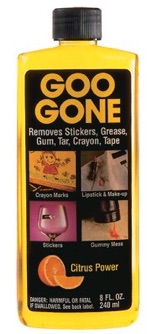Finishing Up
Removing Residual Wax
Finishing Up
Removing Residual Wax

When removing wax with heat, you’ll find that there is usually some residual wax left on the egg at the end of the process. Rather than risk scorching the egg or getting soot on it by chasing down these last bits of wax, other methods of wax removal can be used. There are two ways of doing this.
NATURALS OILS: Some pysankary will coat the egg with a thin film of olive or other vegetable oil, and then give the egg another go around with heat removal. The oil will help soften the wax, and the wax will mix into it when melting, making it easier to wipe off completely. As a bonus, the oil will give the egg a nice, natural sheen.
CHEMICAL DEGREASERS/SOLVENTS: There is a whole family of chemicals, organic solvents, which will dissolve beeswax and other waxes. They can be applied to a pysanka to “melt” the residual wax and make it easy to wipe off.
WARNING: All chemical degreasers still on the market are either flammable, highly flammable, or combustible. Before using them, make sure all flames have been snuffed out. And remember that “inflammable” does NOT mean non-flammable; it is a synonym for “flammable”!!!!
Included in this groups of compounds are all of the solvents discussed in the chemical dissolution section, including those that aren’t useful for mass removal of wax. Goo Gone, for instance, works a bit too slowly to easily remove all the wax from a pysanka, but is quite useful for wiping an egg down to remove the last traces, or for getting old, greasy dirt off.
These degreasers can be used in two different ways:
TISSUE METHOD: A small amount of any degreaser, like those pictures above, can be placed on a tissue, and the surface of the egg wiped down. I often use a bit of odorless mineral spirits, Goof Off or Goo Gone on a store brand tissue for just this purpose. Others swear by Ronsonol, Energine (naptha), or other solvents.
Be careful not too rub too hard, or you can remove dye or scratch the shell. If there is a lot of residual wax, other removal methods should probably be used.
HAND METHOD: Goo Gone, which smells nice and citrusy, works too slowly to be useful as a whole egg degreaser, but is great for removing small amounts of residual wax, as well as soot. One way to use it is to hold the egg in the palm of your gloved hand, put a few drops of Goo Gone on it, and coat it evenly. Wait a few minutes to let it work, and then gently dry the egg with a tissue.
I used to do this with a bare hand, until I discovered that, despite its nice smell, Goo Gone was a chemical concoction with carcinogenic potential. I no longer do this, just as I no longer varnish with a bare hand, and prefer to use the Goo Gone on a tissue. It might be reasonable to use this method while wearing vinyl gloves, but I haven’t tested it out yet.
When using chemical solvents, check the container to make sure they don’t contain water. Goof Off, for instance, sells a whole line of cleaners, some of which contain water. If you were to use a water-containing version on a pysanka, it would cause the colors (dyes) to run and ruin the pysanka.
Applicator Bottles
The various types of metal or glass containers that organic solvents are sold and stored in are not conducive to safe use for residual wax removal. I transfer small amounts of the solvent into plastic applicator bottles with flip tops and keep them on my work table (on a lazy susan). Don’t use larger bottles or large amounts of fluid--plastic bottles allow some evaporation, unlike metal or glass containers with metal seals.
When you need some solvent, just pop open the top, and squeeze a few drops onto a tissue.
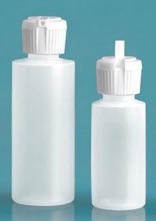
What solvents are useful for the removal of residual wax?
Goof Off, a blend of toluene and other organic solvents, was a good solvent when used correctly, and fantastic for removing residual wax. Unfortunately, it often wasn’t used correctly. Good ventilation is absolutely necessary with solvents. Methylene chloride, a component of Goof Off and other paint strippers, is quite volatile, and breathing in large amounts can cause a heart attack. That was more of a problem for those using it to strip paint off of walls or furniture than those using it in pysankarstvo, but, because of the risk, many stores stopped carrying this type of solvent in 2015.
Since then Goof Off has been reformulated, with acetone replacing much of the xylol. I have not tried the new formula, so cannot comment on how good it is
Goo Gone is a blend of petroleum distillates and orange extract, which gives it a lovely citrusy smell. This makes it attractive to children--do not let them use it unsupervised. While it’s not great for removing large amounts of wax, it is great for cleaning off small quantities of residual wax.
You can sometimes find tiny bottles of it at the dollar store (e.g. Dollar Tree), which are perfect for the pysankarka’s work table. Just take the screw top off, and make a pinhole in the plastic/paper seal. The bottle will dispense single tiny aromatic drops of the solvent.
Odorless Mineral Spirits White spirit (UK & Ireland) or mineral spirits (US, Canada), also known as mineral turpentine (AU/NZ), turpentine substitute, and petroleum spirits, is a petroleum-derived clear liquid used as a common organic solvent in painting.
Mineral spirits are often used as a paint thinner, or as a component thereof, though paint thinner is a broader category of solvent. Odorless mineral spirits (OMS) have been refined to remove the more toxic aromatic compounds, and are used for applications such as oil painting. This is what I generally use for residual wax ; in the USA I purchase them in bulk at the hardware store. In Ukraine I usually buy smaller amounts in art supply stores.
Ronsonol (Lighter Fluid) This used to be a popular solvent in pysankarstvo; it removed wax quickly and cleanly. However, in 2010, the Zippo corporation acquired Ronsonol, and removed the naphtha in it. Its solvent qualities changed, and not for the better. It contains a mix of petroleum distillates with s whiff of naphtha odor per the MSDS.
I never used Ronsonol back when it contained xylol. I did buy a bottle of the new stuff a few years back, and was generally unimpressed with it. The bottle is still mostly full.
Energine Spot Remover Like Ronsonol, this used to contain naphtha, and was quite popular in pysankarstvo circles for wax removal. I vaguely recall using it in my youth. It is no longer produced, having been discontinued in the mid-1990s.
Naphtha Pure naphtha is another volatile liquid hydrocarbon mixture, and is still available for sale in hardware stores, for those who miss the old Ronsonol or Energine. I have not tried it, but it seems as though it would work well for the removal of residual wax.
Interestingly, the term “nafta” (нафта) means crude oil in Ukrainian and several other Slavic languages. This was also once the meaning of the word in English, but that usage is now obsolete.
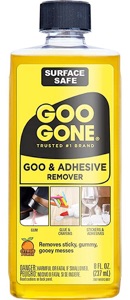
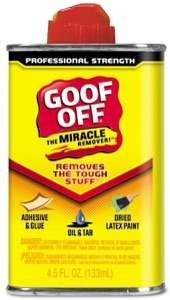
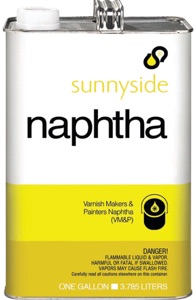
Back to Main Wax Removal page
Back to Main Pysankarstvo page
Removing the Last Bits of Wax
